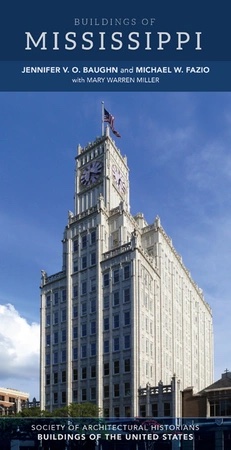
Downtown’s tallest commercial building was designed by Langston of the Bank Building and Equipment Corporation of America. The four-story, glazed, International Style block with projecting concrete canopies is anchored by a five-story corner tower of white brick. An undulating concrete shell roof on the building’s Watts Avenue side and the decorative projecting dots on the wall just below the summit produce a changing shadow pattern. Vertical louvered window panels that automatically shifted with the sun and the corner-mounted sign have been removed.
At 3104 Magnolia Street, the six-story, limestone-clad Jackson County Courthouse (1949, Carl L. Olschner) unites modernist abstract geometries with classical symmetry and monumental scale. Bas-reliefs feature men engaged in industrial trades and fishing. After Katrina, a thirty-four-foot mural Singing River (1959) by James “Mac” Anderson of Shearwater Pottery (GC39) was moved from the courthouse to the adjoining Chancery Court Building and restored.
Across the street at 603 Watts Avenue, the one-story International Style Joe D. Cole Jr. Municipal Building (1958, C. H. Lindsley) features concrete panels, their pitted surfaces produced by seashells.








